With the arrival of autumn comes a deluge of great books. Here you’ll find a sampling of new and forthcoming titles that caught our eye here at The Millions, and that we think might catch yours, too. Some we’ve already perused in galley form; others we’re eager to devour based on their authors, plots, or subject matters. We hope your next fall read is among them.
—Sophia Stewart, editor
October
 Season of the Swamp by Yuri Herrera, tr. Lisa Dillman [F]
Season of the Swamp by Yuri Herrera, tr. Lisa Dillman [F]
What it is: An epic, speculative account of the 18 months that Benito Juárez spent in New Orleans in 1853-54, years before he became the first and only Indigenous president of Mexico.
Who it’s for: Fans of speculative history; readers who appreciate the magic that swirls around any novel set in New Orleans. —Claire Kirch
 The Black Utopians by Aaron Robertson [NF]
The Black Utopians by Aaron Robertson [NF]
What it is: An exploration of Black Americans’ pursuit and visions of utopia—both ideological and physical—that spans the Reconstruction era to the present day and combines history, memoir, and reportage.
Who it’s for: Fans of Saidiya Hartman’s Wayward Lives, Beautiful Experiments and Kristen R. Ghodsee’s Everyday Utopia. —Sophia M. Stewart
 The Third Realm by Karl Ove Knausgaard, tr. Martin Aitken [F]
The Third Realm by Karl Ove Knausgaard, tr. Martin Aitken [F]
What it is: The third installment in Knausgaard’s Morning Star series, centered on the appearance of a mysterious new star in the skies above Norway.
Who it’s for: Real Knausgaard heads only—The Wolves of Eternity and Morning Star are required reading for this one. —SMS
 Brown Women Have Everything by Sayantani Dasgupta [NF]
Brown Women Have Everything by Sayantani Dasgupta [NF]
What it is: Essays on the contradictions and complexities of life as an Indian woman in America, probing everything from hair to family to the joys of travel.
Who it’s for: Readers of Durga Chew-Bose, Erika L. Sánchez, and Tajja Isen. —SMS

 The Plot Against Native America by Bill Vaughn [F]
The Plot Against Native America by Bill Vaughn [F]
What it is: The first narrative history of Native American boarding schools— which aimed “civilize” Indigenous children by violently severing them from their culture— and their enduring, horrifying legacy.
Who it’s for: Readers of Ned Blackhawk and Kathleen DuVal. —SMS
 The Mighty Red by Louise Erdrich [F]
The Mighty Red by Louise Erdrich [F]
What it is: Erdrich’s latest novel set in North Dakota’s Red River Valley is a tale of the intertwined lives of ordinary people striving to survive and even thrive in their rural community, despite environmental upheavals, the 2008 financial crisis, and other obstacles.
Who it’s for: Readers of cli-fi; fans of Linda LeGarde Grover and William Faulkner. —CK
 The Position of Spoons by Deborah Levy [NF]
The Position of Spoons by Deborah Levy [NF]
What it is: The second book from Levy in as many years, diverging from a recent streak of surrealist fiction with a collection of essays marked by exceptional observance and style.
Who it’s for: Close lookers and the perennially curious. —John H. Maher
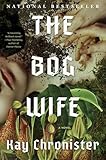 The Bog Wife by Kay Chronister [F]
The Bog Wife by Kay Chronister [F]
What it’s about: The Haddesley family has lived on the same West Virginia bog for centuries, making a supernatural bargain with the land—a generational blood sacrifice—in order to do so—until an uncovered secret changes everything.
Who it’s for: Readers of Karen Russell and Jeff VanderMeer; anyone who has ever used the phrase “girl moss.” —SMS
 The Great When by Alan Moore [F]
The Great When by Alan Moore [F]
What it’s about: When an 18-year old book reseller comes across a copy of a book that shouldn’t exist, it threatens to upend not just an already post-war-torn London, but reality as we know it.
Who it’s for: Anyone looking for a Sherlock Holmes-style mystery dipped in thaumaturgical psychedelia. —Daniella Fishman
 The Message by Ta-Nehisi Coates [NF]
The Message by Ta-Nehisi Coates [NF]
What it’s about: One of our sharpest critical thinkers on social justice returns to nonfiction, nearly a decade after Between the World and Me, visiting Dakar, to contemplate enslavement and the Middle Passage; Columbia, S.C., as a backdrop for his thoughts on Jim Crow and book bans; and the Israeli-occupied West Bank, where he sees contemporary segregation in the treatment of Palestinians.
Who it’s for: Fans of James Baldwin, George Orwell, and Angela Y. Davis; readers of Nikole Hannah-Jones’s The 1619 Project and Isabel Wilkerson’s Caste, to name just a few engagements with national and racial identity. —Nathalie op de Beeck
 Abortion by Jessica Valenti [NF]
Abortion by Jessica Valenti [NF]
What it is: Columnist and memoirist Valenti, who tracks pro-choice advocacy and attacks on the right to choose in her Substack, channels feminist rage into a guide for freedom of choice advocacy.
Who it’s for: Readers of Robin Marty’s The New Handbook for a Post-Roe America, #ShoutYourAbortion proponents, and followers of Jennifer Baumgartner’s [I Had an Abortion] project. —NodB
 Gifted by Suzuki Suzumi, tr. Allison Markin Powell [F]
Gifted by Suzuki Suzumi, tr. Allison Markin Powell [F]
What it’s about: A young sex worker in Tokyo’s red-light district muses on her life and recounts her abusive mother’s final days, in what is Suzuki’s first novel to be translated into English.
Who it’s for: Readers of Susan Boyt and Mieko Kanai; fans of moody, introspective fiction; anyone with a fraught relationship to their mother. —SMS
 Childish Literature by Alejandro Zambra, tr. Megan McDowell [F]
Childish Literature by Alejandro Zambra, tr. Megan McDowell [F]
What it is: A wide-ranging collection of stories, essays, and poems that explore childhood, fatherhood, and family.
Who it’s for: Fans of dad lit (see: Lucas Mann’s Attachments, Keith Gessen’s Raising Raffi, Karl Ove Knausgaard’s seasons quartet, et al). —SMS
 Books Are Made Out of Books ed. Michael Lynn Crews [NF]
Books Are Made Out of Books ed. Michael Lynn Crews [NF]
What it is: A mining of the archives of the late Cormac McCarthy with a focus on the famously tight-lipped author’s literary influences.
Who it’s for: Anyone whose commonplace book contains the words “arquebus,” “cordillera,” or “vinegaroon.” —JHM
 Slaveroad by John Edgar Wideman [F]
Slaveroad by John Edgar Wideman [F]
What it is: A blend of memoir, fiction, and history that charts the “slaveroad” that runs through American history, spanning the Atlantic slave trade to the criminal justice system, from the celebrated author of Brothers and Keepers.
Who it’s for: Fans of Clint Smith and Ta-Nehisi Coates. —SMS
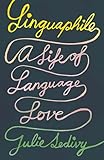 Linguaphile by Julie Sedivy [NF]
Linguaphile by Julie Sedivy [NF]
What it’s about: Linguist Sedivy reflects on a life spent loving language—its beauty, its mystery, and the essential role it plays in human existence.
Who it’s for: Amateur (or professional) linguists; fans of the podcast A Way with Words (me). —SMS
 An Image of My Name Enters America by Lucy Ives [NF]
An Image of My Name Enters America by Lucy Ives [NF]
What it is: A collection of interrelated essays that connect moments from Ives’s life to larger questions of history, identity, and national fantasy,
Who it’s for: Fans of Ives, one of our weirdest and most wondrous living writers—duh; anyone with a passing interest in My Little Pony, Cold War–era musicals, or The Three Body Problem, all of which are mined here for great effect. —SMS
 Women’s Hotel by Daniel Lavery [F]
Women’s Hotel by Daniel Lavery [F]
What it is: A novel set in 1960s New York City, about the adventures of the residents of a hotel providing housing for young women that is very much evocative of the real-life legendary Barbizon Hotel.
Who it’s for: Readers of Mary McCarthy’s The Group and Rona Jaffe’s The Best of Everything. —CK
 The World in Books by Kenneth C. Davis [NF]
The World in Books by Kenneth C. Davis [NF]
What it is: A guide to 52 of the most influential works of nonfiction ever published, spanning works from Plato to Ida B. Wells, bell hooks to Barbara Ehrenreich, and Sun Tzu to Joan Didion.
Who it’s for: Lovers of nonfiction looking to cover their canonical bases. —SMS
 Blue Light Hours by Bruna Dantas Lobato [F]
Blue Light Hours by Bruna Dantas Lobato [F]
What it’s about: Through the emanating blue-glow of their computer screens, a mother and daughter, four-thousand miles apart, find solace and loneliness in their nightly Skype chats in this heartstring-pulling debut.
Who it’s for: Someone who needs to be reminded to CALL YOUR MOTHER! —DF
 Riding Like the Wind by Iris Jamahl Dunkle [NF]
Riding Like the Wind by Iris Jamahl Dunkle [NF]
What it is: The biography of Sanora Babb, a contemporary of John Steinbeck’s whose field notes and interviews with Dust Bowl migrants Steinbeck relied upon to write The Grapes of Wrath.
Who it’s for: Steinbeck fans and haters alike; readers of Kristin Hannah’s The Four Winds and the New York Times Overlooked column; anyone interested in learning more about the Dust Bowl migrants who fled to California hoping for a better life. —CK
 Innie Shadows by Olivia M. Coetzee [F]
Innie Shadows by Olivia M. Coetzee [F]
What it is: a work of crime fiction set on the outskirts of Cape Town, where a community marred by violence seeks justice and connection; also the first novel to be translated from Kaaps, a dialect of Afrikaans that was until recently only a spoken language.
Who it’s for: fans of sprawling, socioeconomically-attuned crime dramas a la The Wire. —SMS
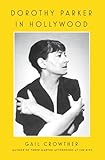 Dorothy Parker in Hollywood by Gail Crowther [NF]
Dorothy Parker in Hollywood by Gail Crowther [NF]
What it is: A history of the famous wit—and famous New Yorker—in her L.A. era, post–Algonquin Round Table and mid–Red Scare.
Who it’s for: Owners of a stack of hopelessly dog-eared Joan Didion paperbacks. —JHM
 The Myth of American Idealism by Noam Chomsky and Nathan J. Robinson [NF]
The Myth of American Idealism by Noam Chomsky and Nathan J. Robinson [NF]
What it is: A potent critique of the ideology behind America’s foreign interventions and its status as a global power, and an treatise on how the nation’s hubristic pursuit of “spreading democracy” threatens not only the delicate balance of global peace, but the already-declining health of our planet.
Who it’s for: Chomskyites; policy wonks and casual critics of American recklessness alike. —DF
 Mysticism by Simon Critchley [NF]
Mysticism by Simon Critchley [NF]
What it is: A study of mysticism—defined as an experience, rather than religious practice—by the great British philosopher Critchley, who mines music, poetry, and literature along the way.
Who it’s for: Readers of John Gray, Jorge Luis Borges, and Simone Weil. —SMS
 Q&A by Adrian Tomine [NF]
Q&A by Adrian Tomine [NF]
What it is: The Japanese American creator of the Optic Nerve comic book series for D&Q, and of many a New Yorker cover, shares his personal history and his creative process in this illustrated unburdening.
Who it’s for: Readers of Tomine’s melancholic, sometimes cringey, and occasionally brutal collections of comics short stories including Summer Blonde, Shortcomings, and Killing and Dying. —NodB
 Sonny Boy by Al Pacino [NF]
Sonny Boy by Al Pacino [NF]
What it is: Al Pacino’s memoir—end of description.
Who it’s for: Cinephiles; anyone curious how he’s gonna spin fumbling Diane Keaton. —SMS
 Seeing Baya by Alice Kaplan [NF]
Seeing Baya by Alice Kaplan [NF]
What it is: The first biography of the enigmatic and largely-forgotten Algerian artist Baya Mahieddine, who first enchanted midcentury Paris as a teenager.
Who it’s for: Admirers of Leonora Carrington, Hilma af Klint, Frida Kahlo, and other belatedly-celebrated women painters. —SMS
 Absolution by Jeff VanderMeer [F]
Absolution by Jeff VanderMeer [F]
What it is: A surprise return to the Area X, the stretch of unforbidding and uncanny coastline in the hit Southern Reach trilogy.
Who it’s for: Anyone who’s heard this song and got the reference without Googling it. —JHM
 The Four Horsemen by Nick Curtola [NF]
The Four Horsemen by Nick Curtola [NF]
What it is: The much-anticipated cookbook from the team behind Brooklyn’s hottest restaurant (which also happens to be co-owned by James Murphy of LCD Soundsystem).
Who it’s for: Oenophiles; thirty-somethings who live in north Williamsburg (derogatory). —SMS
 Seeing Further by Esther Kinsky, tr. Caroline Schmidt [F]
Seeing Further by Esther Kinsky, tr. Caroline Schmidt [F]
What it’s about: An unnamed German woman embarks on the colossal task of reviving a cinema in a small Hungarian village.
Who it’s for: Fans of Jenny Erpenbeck; anyone charmed by Cinema Paradiso (not derogatory!). —SMS
 Ripcord by Nate Lippens [NF]
Ripcord by Nate Lippens [NF]
What it’s about: A novel of class, sex, friendship, and queer intimacy, written in delicious prose and narrated by a gay man adrift in Milwaukee.
Who it’s for: Fans of Brontez Purnell, Garth Greenwell, Alexander Chee, and Wayne Koestenbaum. —SMS
 The Use of Photography by Annie Ernaux and Marc Marie, tr. Alison L. Strayer [NF]
The Use of Photography by Annie Ernaux and Marc Marie, tr. Alison L. Strayer [NF]
What it’s about: Ernaux’s love affair with Marie, a journalist, while she was undergoing treatment for cancer, and their joint project to document their romance.
Who it’s for: The Ernaux hive, obviously; readers of Sontag’s On Photography and Janet Malcolm’s Still Pictures. —SMS
 Nora Ephron at the Movies by Ilana Kaplan [NF]
Nora Ephron at the Movies by Ilana Kaplan [NF]
What it is: Kaplan revisits Nora Ephron’s cinematic watersheds—Silkwood, Heartburn, When Harry Met Sally, You’ve Got Mail, and Sleepless in Seattle—in this illustrated book. Have these iconic stories, and Ephron’s humor, weathered more than 40 years?
Who it’s for: Film history buffs who don’t mind a heteronormative HEA; listeners of the Hot and Bothered podcast; your coastal grandma. —NodB
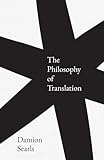 The Philosophy of Translation by Damion Searls [NF]
The Philosophy of Translation by Damion Searls [NF]
What it is: A meditation on the act and art of translation by one of today’s most acclaimed practitioners, best known for his translations of Fosse, Proust, et al.
Who it’s for: Regular readers of Words Without Borders and Asymptote; professional and amateur literary translators alike. —SMS
 Salvage by Dionne Brand
Salvage by Dionne Brand
What it is: A penetrating reevaluation of the British literary canon and the tropes once shaped Brand’s reading life and sense of self—and Brand’s first major work of nonfiction since her landmark A Map to the Door of No Return.
Who it’s for: Readers of Christina Sharpe’s Ordinary Notes and Elizabeth Hardwick’s Seduction and Betrayal. —SMS
 Masquerade by Mike Fu [F]
Masquerade by Mike Fu [F]
What it’s about: Housesitting for an artist friend in present-day New York, Meadow Liu stumbles on a novel whose author shares his name—the first of many strange, haunting happenings that lead up to the mysterious disappearance of Meadow’s friend.
Who it’s for: fans of Ed Park and Alexander Chee. —SMS
November
 The Beggar Student by Osamu Dazai, tr. Sam Bett [F]
The Beggar Student by Osamu Dazai, tr. Sam Bett [F]
What it is: A novella in the moody vein of Dazai’s acclaimed No Longer Human, following the 30-something “fictional” Dazai into another misadventure spawned from a hubristic spat with a high schooler.
Who it’s for: Longtime readers of Dazai, or new fans who discovered the midcentury Japanese novelist via TikTok and the Bungo Stray Dogs anime. —DF
 In Thrall by Jane DeLynn [F]
In Thrall by Jane DeLynn [F]
What it is: A landmark lesbian bildungsroman about 16-year-old Lynn’s love affair with her English teacher, originally published in 1982.
Who it’s for: Fans of Joanna Russ’s On Strike Against God and Edmund White’s A Boy’s Own Story —SMS
 Washita Love Child by Douglas Kent Miller [NF]
Washita Love Child by Douglas Kent Miller [NF]
What it is: The story of Jesse Ed Davis, the Indigenous musician who became on of the most sought after guitarists of the late ’60s and ’70s, playing alongside B.B. King, Bob Dylan, John Lennon, and more.
Who it’s for: readers of music history and/or Indigenous history; fans of Joy Harjo, who wrote the foreword. —SMS
 Set My Heart on Fire by Izumi Suzuki, tr. Helen O’Horan [F]
Set My Heart on Fire by Izumi Suzuki, tr. Helen O’Horan [F]
What it is: Gritty, sexy, and wholly rock ’n’ roll, Suzuki’s first novel translated into English (following her story collection, Hit Parade of Tears) follows 20-year-old Izumi navigating life, love, and music in the underground scene in ’70s Japan.
Who it’s for: Fans of Meiko Kawakami, Ursula K. Le Guin, and Marlowe Granados’s Happy Hour. —DF
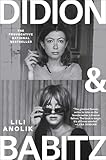 Didion & Babitz by Lili Anolik [NF]
Didion & Babitz by Lili Anolik [NF]
What it is: A dual portrait of Joan Didion and Eve Babitz, who are so often compared to—and pitted against—each other on the basis of their mutual Los Angeles milieu.
Who it’s for: Fans or haters of either writer (the book is fairly pro-Babitz, often at Didion’s expense); anyone who has the Lit Hub Didion tote bag. —SMS
 The Endless Refrain by David Rowell [NF]
The Endless Refrain by David Rowell [NF]
What it’s about: How the rise of music streaming, demonitizing of artist revenue, and industry tendency toward nostalgia have laid waste to the musical landscape, and the future of music culture.
Who it’s for: Fans of Kyle Chayka, Spence Kornhaber, and Lindsay Zoladz. —SMS
 Every Arc Bends Its Radian by Sergio De La Pava [F]
Every Arc Bends Its Radian by Sergio De La Pava [F]
What it is: A mind- and genre-bending detective story set in Cali, Colombia, that blends high-stakes suspense with rigorous philosophy.
Who it’s for: Readers of Raymond Chandler, Thomas Pynchon, and Jules Verne. —SMS
 Something Close to Nothing by Tom Pyun [F]
Something Close to Nothing by Tom Pyun [F]
What it’s about: At the airport with his white husband Jared, awaiting a flight to Cambodia to meet the surrogate mother carrying their adoptive child-to-be, Korean American Wynn decides parenthood isn’t for him, and bad behavior ensues.
Who it’s for: Pyun’s debut is calculated to cut through saccharine depictions of queer parenthood—could pair well with Torrey Peters’s Detransition, Baby. —NodB
 Rosenfeld by Maya Kessler [F]
Rosenfeld by Maya Kessler [F]
What it is: Kessler’s debut—rated R for Rosenfeld—follows one Noa Simmons through the tumultuous and ultimately profound power play that is courting (and having a lot of sex with) the titular older man who soon becomes her boss.
Who it’s for: Fans of Sex and the City, Raven Leilani’s Luster, and Coco Mellor’s Cleopatra and Frankenstein. —DF
 Lazarus Man by Richard Price [F]
Lazarus Man by Richard Price [F]
What it is: The former The Wire writer offers yet another astute chronicle of urban life, this time of an ever-changing Harlem.
Who it’s for: Fans of Colson Whitehead’s Crook Manifesto and Paul Murray’s The Bee Sting—and, of course, The Wire. —SMS
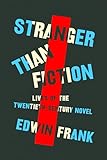 Stranger Than Fiction by Edwin Frank [NF]
Stranger Than Fiction by Edwin Frank [NF]
What it is: An astute curveball of a read on the development and many manifestations of the novel throughout the tumultuous 20th century.
Who it’s for: Readers who look at a book’s colophon before its title. —JHM
 Letters to His Neighbor by Marcel Proust, tr. Lydia Davis
Letters to His Neighbor by Marcel Proust, tr. Lydia Davis
What it is: A collection of Proust’s tormented—and frequently hilarious—letters to his noisy neighbor which, in a diligent translation from Davis, stand the test of time.
Who it’s for: Proust lovers; people who live below heavy-steppers. —DF
 Context Collapse by Ryan Ruby [NF]
Context Collapse by Ryan Ruby [NF]
What it is: A self-proclaimed “poem containing a history of poetry,” from ancient Greece to the Iowa Workshop, from your favorite literary critic’s favorite literary critic.
Who it’s for: Anyone who read and admired Ruby’s titanic 2022 essay on The Waste Land; lovers of poetry looking for a challenge. —SMS
 How Sondheim Can Change Your Life by Richard Schoch [NF]
How Sondheim Can Change Your Life by Richard Schoch [NF]
What it’s about: Drama professor Schoch’s tribute to Stephen Sondheim and the life lessons to be gleaned from his music.
Who it’s for: Sondheim heads, former theater kids, end of list. —SMS
 The Serviceberry by Robin Wall Kimmerer [NF]
The Serviceberry by Robin Wall Kimmerer [NF]
What it is: 2022 MacArthur fellow and botanist Kimmerer, an enrolled member of the Citizen Potawatomi Nation, (re)introduces audiences to a flowering, fruiting native plant beloved of foragers and gardeners.
Who it’s for: The restoration ecologist in your life, along with anyone who loved Braiding Sweetgrass and needs a nature-themed holiday gift. —NodB
 My Heart Belongs in an Empty Big Mac Container Buried Beneath the Ocean Floor by Homeless [F]
My Heart Belongs in an Empty Big Mac Container Buried Beneath the Ocean Floor by Homeless [F]
What it is: A pseudonymous, tenderly comic novel of blue whales and Golden Arches, mental illness and recovery.
Who it’s for: Anyone who finds Thomas Pynchon a bit too staid. —JHM
 Yoke and Feather by Jessie van Eerden [NF]
Yoke and Feather by Jessie van Eerden [NF]
What it’s about: Van Eerden’s braided essays explore the “everyday sacred” to tease out connections between ancient myth and contemporary life.
Who it’s for: Readers of Courtney Zoffness’s Spilt Milk and Jeanna Kadlec’s Heretic. —SMS
 Camp Jeff by Tova Reich [F]
Camp Jeff by Tova Reich [F]
What it’s about: A “reeducation” center for sex pests in the Catskills, founded by one Jeffery Epstein (no, not that one), where the dual phenomena of #MeToo and therapyspeak collide.
Who it’s for: Fans of Philip Roth and Nathan Englander; cancel culture skeptics. —SMS
Selected Amazon Reviews by Kevin Killian [NF]
What it is: A collection of 16 years of Killian’s funniest, wittiest, and most poetic Amazon reviews, the sheer number of which helped him earn the rarefied “Top 100” and “Hall of Fame” status on the site.
Who it’s for: Fans of Wayne Koestenbaum and Dodie Bellamy, who wrote introduction and afterword, respectively; people who actually leave Amazon reviews. —DF
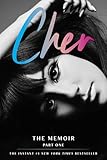 Cher by Cher [NF]
Cher by Cher [NF]
What it is: The first in a two-volume memoir, telling the story of Cher’s early life and ascendent career as only she can tell it.
Who it’s for: Anyone looking to fill the My Name Is Barbra–sized hole in their heart, or looking for something to tide them over until the Liza memoir drops. —SMS
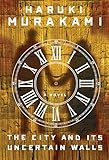 The City and Its Uncertain Walls by Haruki Murakami, tr. Philip Gabriel [F]
The City and Its Uncertain Walls by Haruki Murakami, tr. Philip Gabriel [F]
What it is: Murakami’s first novel in over six years returns to the high-walled city from his 1985 story “Hard-Boiled Wonderland and the End of the World” with one man’s search for his lost love—and, simultaneously, an ode to libraries and literature itself.
Who it’s for: Murakami fans who have long awaited his return to fiction. —DF
 American Bulk by Emily Mester [NF]
American Bulk by Emily Mester [NF]
What it’s about: Reflecting on what it means to “live life to the fullest,” Mester explores the cultural and personal impacts of America’s culture of overconsumption, from Costco hauls to hoarding to diet culture—oh my!
Who it’s for: Lovers of sustainability; haters of excess; skeptics of the title essay of Becca Rothfeld’s All Things Are Too Small. —DF
 The Icon and the Idealist by Stephanie Gorton [NF]
The Icon and the Idealist by Stephanie Gorton [NF]
What it is: A compelling look at the rivalry between Margaret Sanger, of Planned Parenthood fame, and Mary Ware Dennett, who each held radically different visions for the future of birth control.
Who it’s for: Readers of Amy Sohn’s The Man Who Hated Women and Katherine Turk’s The Women of NOW; anyone interested in the history of reproductive rights. —SMS
December
 Rental House by Weike Wang [F]
Rental House by Weike Wang [F]
What it’s about: Married college sweethearts invite their drastically different families on a Cape Code vacation, raising questions about marriage, intimacy, and kinship.
Who it’s for: Fans of Wang’s trademark wit and sly humor (see: Joan Is Okay and Chemistry); anyone with an in-law problem.
 Woo Woo by Ella Baxter [F]
Woo Woo by Ella Baxter [F]
What it’s about: A neurotic conceptual artist loses her shit in the months leading up to an exhibition that she hopes will be her big breakout, poking fun at the tropes of the “art monster” and the “woman of the verge” in one fell, stylish swoop.
Who it’s for: Readers of Sheena Patel’s I’m a Fan and Chris Kraus’s I Love Dick; any woman who is grateful to but now also sort of begrudges Jenny Offil for introducing “art monster” into the lexicon (me). —SMS
 Berlin Atomized by Julia Kornberg, tr. Jack Rockwell and Julia Kornberg [F]
Berlin Atomized by Julia Kornberg, tr. Jack Rockwell and Julia Kornberg [F]
What it’s about: Spanning 2001 to 2034, three Jewish and downwardly mobile siblings come of age in various corners of the world against the backdrop of global crisis.
Who it’s for: Fans of Catherine Lacey’s Biography of X and Joshua Cohen’s The Netanyahus. —SMS
 Sand-Catcher by Omar Khalifah, tr. Barbara Romaine [F]
Sand-Catcher by Omar Khalifah, tr. Barbara Romaine [F]
What it is: A suspenseful, dark satire of memory and nation, in which four young Palestinian journalists at a Jordanian newspaper are assigned to interview an elderly witness to the Nakba, the violent 1948 expulsion of native Palestinians from Israel—but to their surprise, the survivor doesn’t want to rehash his trauma for the media.
Who it’s for: Anyone looking insight—tinged with grim humor—into the years leading up to the present political crisis in the Middle East and the decades-long goal of Palestinian autonomy. —NodB
 The Shutouts by Gabrielle Korn [F]
The Shutouts by Gabrielle Korn [F]
What it’s about: In the dystopian future, mysteriously connected women fight to survive on the margins of society amid worsening climate collapse.
Who it’s for: Fans of Korn’s Yours for the Taking, which takes place in the same universe; readers of Becky Chambers and queer-inflected sci-fi. —SMS
 What in Me Is Dark by Orlando Reade [NF]
What in Me Is Dark by Orlando Reade [NF]
What it’s about: The enduring, evolving influence of Milton’s Paradise Lost on political history—and particularly on the work of 12 revolutionary readers, including Malcom X and Hannah Arendt.
Who it’s for: English majors and fans of Ryan Ruby and Sarah Bakewell—but I repeat myself. —SMS
 The Afterlife Is Letting Go by Brandon Shimoda [NF]
The Afterlife Is Letting Go by Brandon Shimoda [NF]
What it’s about: Shimoda researches the mass incarceration of Japanese Americans during WWII, and speaks with descendants of those imprisoned, for this essay collection about the “afterlife” of cruelty and xenophobia in the U.S.
Who it’s for: Anyone to ever visit a monument, museum, or designated site of hallowed ground where traumatic events have taken place. —NodB
 No Place to Bury the Dead by Karina Sainz Borgo, tr. Elizabeth Bryer [F]
No Place to Bury the Dead by Karina Sainz Borgo, tr. Elizabeth Bryer [F]
What it’s about: When Angustias Romero loses both her children while fleeing a mysterious disease in her unnamed Latin American country, she finds herself in a surreal, purgatorial borderland where she’s soon caught in a power struggle.
Who it’s for: Fans of Maríana Enriquez and Mohsin Hamid. —SMS
 The Rest Is Silence by Augusto Monterroso, tr. Aaron Kerner [F]
The Rest Is Silence by Augusto Monterroso, tr. Aaron Kerner [F]
What it is: The author of some of the shortest, and tightest, stories in Latin American literature goes long with a metafictional skewering of literary criticism in his only novel.
Who it’s for: Anyone who prefers the term “palm-of-the-hand stories” to “flash fiction.” —JHM
 Tali Girls by Siamak Herawi, tr. Sara Khalili [F]
Tali Girls by Siamak Herawi, tr. Sara Khalili [F]
What it is: An intimate, harrowing, and vital look at the lives of girls and women in an Afghan mountain village under Taliban rule, based on true stories.
Who it’s for: Readers of Nadia Hashimi, Akwaeke Emezi, and Maria Stepanova. —SMS
 Sun City by Tove Jansson, tr. Thomas Teal [F]
Sun City by Tove Jansson, tr. Thomas Teal [F]
What it’s about: During her travels through the U.S. in the 1970s, Jansson became interested in the retirement home as a peculiarly American institution—here, she imagines the tightly knit community within one of them.
Who it’s for: Fans of Jansson’s other fiction for adults, much of which explores the lives of elderly folks; anyone who watched that documentary about The Villages in Florida. —SMS
Editor’s note: We’re always looking to make our seasonal book previews more useful to the readers, writers, and critics they’re meant to serve. Got an idea for how we can improve our coverage? Tell me about it at sophia@themillions.com.









